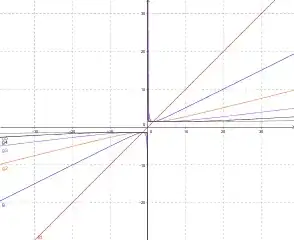Looking at
$$
g(x)=\frac{x}{2}+\frac{1}{x} = \frac{x^2 + 2}{2x}
$$
and cranking some iterations through the Maxima CAS, I get
$$
g^2(x) =
{{x^4+12\,x^2+4}\over{4\,x^3+8\,x}} \\
g^3(x) =
{{x^8+56\,x^6+280\,x^4+224\,x^2+16}\over{8\,x^7+112\,x^5+224\,x^3+
64\,x}} \\
g^4(x) =
{{x^{16}+240\,x^{14}+7280\,x^{12}+64064\,x^{10}+205920\,x^8+256256
\,x^6+116480\,x^4+15360\,x^2+256}\over{16\,x^{15}+1120\,x^{13}+17472
\,x^{11}+91520\,x^9+183040\,x^7+139776\,x^5+35840\,x^3+2048\,x}}
$$
This gives no simple pattern I am able to spot, just more or less
complicated rational functions with nominator degree $2^k$ and denominator degree $2^k - 1$, and the proper coefficients to go asymptotically to $h^k$.
Here are plots of $\text{id}, g, g^2, g^3, g^4, g^5$:
 (Larger version)
(Larger version)
This is slightly more interesting, as we see that for $x > 0$ the series $g^k$ seems to iterate against a constant function, at value of the positive fixed point $x_+^*$ of $g$. (Similar for the negative arguments against $x_-^*$).
Going for the fixed points:
$$
x = g(x) = \frac{x^2 + 2}{2x} \Rightarrow \\
2 x^2 = x^2 + 2 \Rightarrow \\
x^2 = 2 \Rightarrow \\
x = \pm \sqrt{2}
$$
